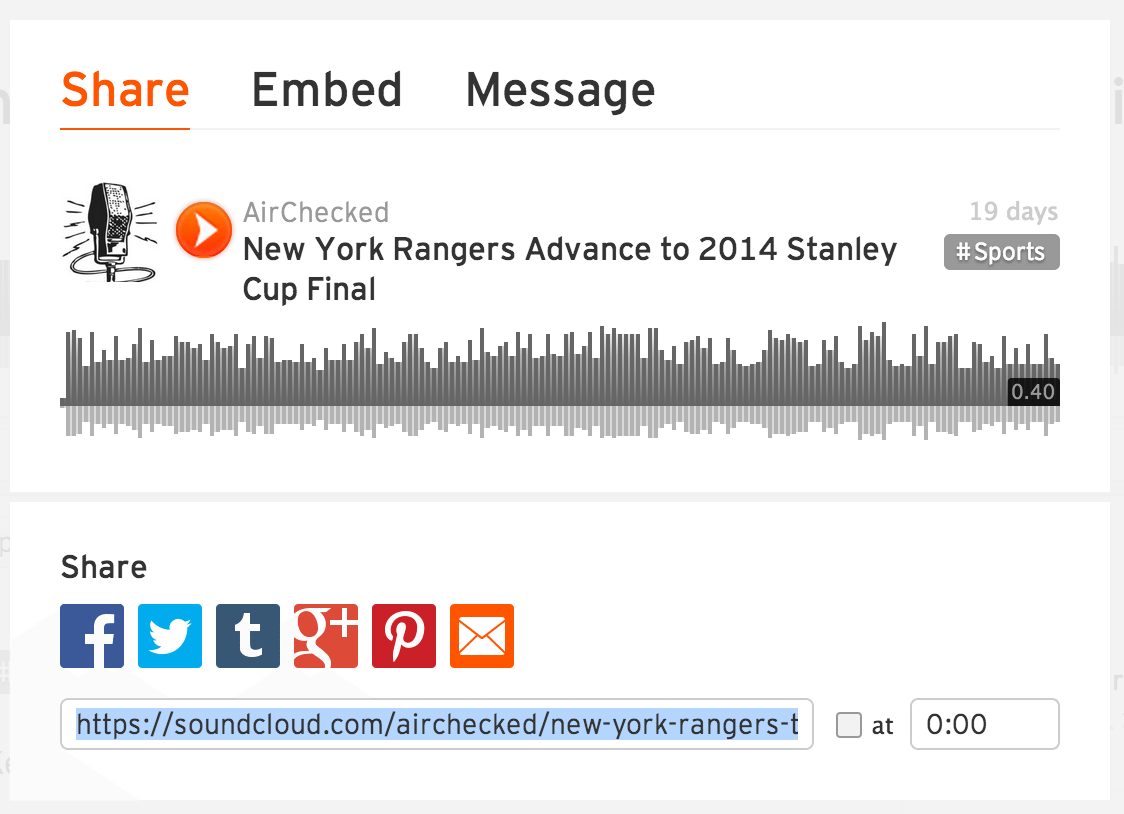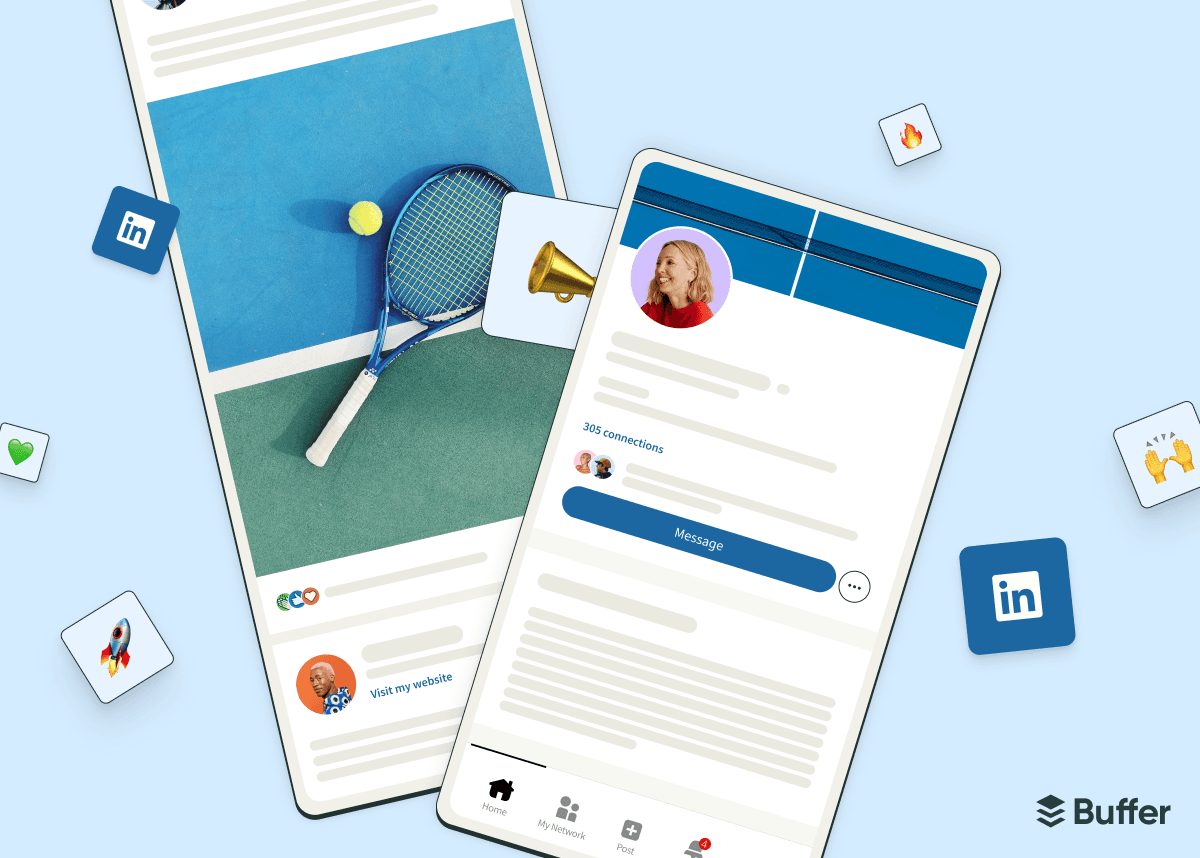Content marketing comes in many different shapes and sizes. Creators like you have many options: blog posts, social media updates, visuals, videos, slide decks, and even more. You can even add podcasting to this mix.
Audio is being used in clever ways to fit into the content plans of some of the top forward-thinking websites and blogs. Tim Ferris, the author of The Four-Hour Work Week, started a very popular podcast from his blog. The Juice runs its Modern Day Marketer podcast in tandem with its main product targeted toward marketers and brands.
Podcasts are here to stay. Have you thought about starting your own? If so, here’s what I dug up for how to get going in this new content direction. Read on to learn the ABCs of podcasting for beginners.
Why you should jump headfirst into podcasting
When was the last time you listened to a podcast?
If it’s been a while for you, chances are that someone you know has listened pretty recently. Over 62% of Americans age 12 and up have ever listened to a podcast, and 38% listen every month.
The ubiquity of mobile devices and shifting content consumption habits represent a huge opportunity for the growth of podcasts.
Then there are the strategic reasons, too. Tech companies focusing on audio and other forms of original content like Spotify to Apple have been investing heavily into podcasts (see: multi-million dollar podcast deals with the likes of Joe Rogan or Prince Harry and Meghan Markle).
Podcasts inspire deeper engagement – it's rare to find something to hold your attention for 30-plus minutes. And they work as multitasking options, too — you can listen to a podcast while you cook or while you drive. The same can’t be said for blog posts or any form of visual content.
Done right, there are many advantages to starting a podcast of your own—new audiences, less competition, and greater intimacy among them. And it takes less than you think to get started. Here’s all that a beginner needs to create an amazing podcast.
Invest in the right podcasting gear
A quality podcast will mean quality equipment. Of course, thanks to platforms like Anchor and Podcastle, you can record a podcast with nothing more than your phone and a lavalier microphone off Amazon. But if you want to grow your podcast into a revenue-generating tool
Have you heard of the MVP concept? It stands for Minimum Viable Product, and it is a startup-y term for pushing out the bare bones version of whatever you have, seeing if people enjoy it, then building it up from there. Invest enough to create a quality podcast, see if people like it, then advance from there.
Buy a microphone
Audio quality begins and ends with a microphone. The better microphone you buy, the sharper your podcast will sound. And audio quality reigns supreme when a person’s podcast choices include heavyweights like WNYC, NPR, and ESPN.
Fortunately, it won’t break the bank to get a good-enough microphone.
USB microphones—like the Snowball by Blue Microphones—start around $70. Most podcast equipment buying advice you’ll read about podcast microphones is to purchase a dynamic front-firing microphone with good rejection, meaning it picks up your voice clearly without the unwanted sounds of wherever you’re recording.
You can also pick up a headphone/microphone headset for around $30. This is a great option if you’ll be podcasting with cohosts or with guests (more on this below). If you opt for the standalone mic, you can always grab a separate set of headphones—even some you have lying around—and you might also consider buying or fashioning a microphone stand so that you’re comfortable for your podcast.
Recording, uploading, and promoting
Before you press the record button, there are a couple of steps to prepare for your podcast.
- Format: What’s your podcast going to look like?
- Content: What’s your podcast going to say?
Podcasts can take many forms: one-man shows, cohosts, guests, call-ins, etc. Metafilter founder Matt Haughey's advice from a decade ago still rings true – your show should involve two or three hosts.
I listen to a lot of podcasts and the most typical format is 2 or 3 hosts and sometimes one guest. I’ve never subscribed to a single-person podcast before because I’ve yet to find a single-person-talking podcast that is interesting enough to stick with. Two or three people chattering to each other is the most common format but it’s possible to take it too far.
Your best bet for a podcast that sounds organized and professional is to practice beforehand by figuring out what you’re going to say and coming up with an outline for your recording. You don’t have to go so far as to script things out. Just have a road map for where you’re headed and what you want to touch on.
Here’s a sample outline to consider via Voices.com:
- Show intro (who you are, what you’re going to talk about): 30-60 seconds
- Intro music (repeat for each show so listeners identify the jingle with your show): 30-60 seconds
- Topic 1: 3 minutes
- Topic 2: 3 minutes
- Interlude (music or break): 30 seconds
- Topic 3: 3 minutes
- Topic 4: 3 minutes
- Closing remarks (thank audience, thank guests, talk about the next show): 2 minutes
- Closing music (suggest same as Intro music jingle): 30-60 seconds
When it comes time to do the actual recording, if you can't meet up with your guests in person, the easiest solution might be a simple recorded Zoom call. That's how we handled all the podcast recording for Small Business, Big Lessons this season and last.
You can call up your co-host or guests via Zoom and record the call with special recording software. When you’re finished, an editing application like Audacity or GarageBand can help with the clean-up, processing, music, and publication.
If you have cohosts, you might consider each of you recording your end of the conversation and stitching the separate audio files together in post-production. This makes for cleaner audio.
Your final audio can be uploaded to several different places. Here are a few of the big ones:
After you’ve finished recording, editing, and producing your podcast, you can upload it to hosting sites like Libsyn, Soundcloud, Anchor, and Transistor. They’ll generate your RSS feed for you so that you can submit it to Apple Podcasts, Spotify, and other players.
Here’s what’s involved in taking your podcast onto Apple Podcasts.
- Step 1: Create an RSS feed for your podcasts. If you upload your files to a site like Libsyn, Anchor, or Transistor, the feed creation is done automatically for you.
- Step 2: Log in to Apple Podcasts Connect. Using your Apple ID, log in at podcastsconnect.apple.com.
- Step 3: Enter your feed URL and then click “Validate.” Apple will pull your podcast’s feed details (Title, Artwork, Description, etc.)
- Step 4: Click submit. Apple will give you a confirmation message, letting you know that there may be a review process for your podcast. This is typically within 24 to 48 hours but can take up to five days. You will receive an email letting you know if you’re approved. Three to five days after that, people can begin searching and finding your podcast in the Apple Podcasts app.
For promotion and sharing of your podcast, a lot will depend on the site where you upload. Places like Soundcloud, for instance, offer a robust set of sharing options built in. You can share directly to Twitter, Facebook, and more, and you can embed the audio directly into your blog posts.

Embedding audio is perhaps the best way to sync your podcast with your blog content. Many top blogs use their podcast as an additional blog post, adding the audio directly into the body of the post and providing either a full transcript of the podcast or a list of topics and resources covered in the podcast. (Complete transcripts can be helpful for SEO and accessibility.)
The ideal everything for podcasts
We get quite a kick out of learning the ideal length and frequency for a number of different types of content, and podcasting is no exception. There’s less research out there about podcasts, so what I couldn’t find, I ran the numbers myself.
The ideal length of a podcast: 22 minutes
Stitcher, an online radio and podcast site, says that the average listener stays connected for 22 minutes. The science of attention spans supports this number, too. TED Talks have an 18-minute maximum because scientists believe we can’t hold our attention on a single presenter for any longer before we check out.
Best day to post a podcast: Tuesday
To find this conclusion, I pulled the numbers for the Top 25 podcasts in the iTunes store and noted their publishing schedule and the frequency with which they published new podcasts. There was a large variety of posting schedules among the Top 25, but a small trend did begin to develop. Sixty percent of podcasts with a regular schedule posted early in the week, before Wednesday. The most common single day was Tuesday (which just so happens to be the day when new music hits the iTunes store, presumably meaning more visits who might see a new podcast).
Best frequency to post a podcast: Weekly
Forty percent of the Top 25 podcasts with a regular posting schedule publish once per week. The next most common frequency is twice per week. Of the Top 25, only three podcasts did not have a discernible schedule for their posting. It seems that some publishing rhythm is preferred over no rhythm.

Podcasts to learn from
We love taking inspiration from others and learning how to best tackle new media like podcasts. As I mentioned above, several key sites are exploring podcasts, and they’re doing so in really interesting ways. Here is a breakdown of five of the top ones and how they do podcasts.
- The Tim Ferriss Show: Even with episodes going over 1-hour, Tim Ferriss' podcast, with over 600 episodes, repeatedly captivates its audience every single time.
- Modern Love: The NYTimes podcast, which is essentially the audio version of the stories from its popular column, is popular with audiences for its diverse storytelling and famous voices like Saoirse Ronan and Maggie Smith
Conclusion
At the top of the post, I mentioned a few of the fears that stand in the way of my podcasting dreams.
“My voice sounds weird.” “I hate public speaking.” Many of the best podcasters began with the same fears, and once you hear the wide variety of voices in podcasts, you’ll feel okay, too, about starting your own.
“I don’t have the technical skills needed to record.” Technical skills are easier and easier to come by nowadays with the technology available. And there’s really not much editing to be done with a simple podcast.
“The cost of quality equipment exceeds my small budget.” Forty dollars should be within almost everyone’s budget, and that’s all you may need to get a viable microphone set up and begin podcasting.
Hopefully, you’re feeling better about those fears now.
What questions do you have about podcasting? If you’ve already dabbled with podcasts, what lessons have you learned along the way? What podcasts do you like the best? We’d love to hear your thoughts on Twitter!
Try Buffer for free
190,000+ creators, small businesses, and marketers use Buffer to grow their audiences every month.


